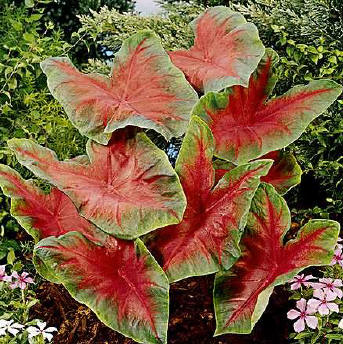Judith Bryant
Adams County Master Gardener
Gardening in the shade can be a very rewarding experience. You can create a tranquil cool retreat for those hot days of summer, and it’s far more
pleasant to work in the shade than in the hot blistering sun. Also it’s much kinder to your skin.
Before selecting plants, you will need to identify how much shade you have – light, partial or full. Areas receiving morning sun or about 3 to 4 hours
of shade are considered in light shade. Partial shade is approximately 4 to 6 hours of shade. Full shade is under mature trees or the north side of a building receiving no
direct sunlight, but some indirect light. Observe your garden at different times during the day to determine the amount of shade it gets. Be aware that the amount of shade
varies with the seasons.
Once you have established the type of shade you have, you can begin selecting plantings for these areas. Also, if you are planting under trees, you
will need to consider the root interference you will encounter. It is also a good idea to do a soil test to determine the soil’s pH. Kits with instructions can be obtained at
the Adams County Extension Office on old Harrisburg Road in Gettysburg. You will then be able to amend your soil to the requirements of the plants you have chosen.
Spring flowering bulbs can be planted in a shade garden, as they will bloom before the trees leaf out. There are many perennials and some annuals that
will give you a wide range of color for your shade garden. Hostas with their handsome leaf colorations from green and cream variegated to lime green to almost blue provide
leaf color. Their lavender or white lily-like flowers appear in summer. Hostas come in a wide range of sizes, some reaching 32" in height.
|

Annual Caladium, with its multi-colored leaves, is a great choice for any shade garden.
|
Another good choice for the shade garden is Astilbe. It requires evenly moist soil, is not drought tolerant and flowers in June or July providing your
shade garden with plume flowers in white, reds and pinks. Ferns are also a good choice for a shade garden. Japanese Painted Fern is quite colorful in shades of green, silver
and red. Sweet Woodruff makes a good ground cover and sports numerous dainty white flowers in May. It is shallow rooted and, therefore, does not interfere with other plants.
Lenten Rose, Helleborus orientalis, needs moist well-drained soil with plenty of organic matter and blooms in April/May. It is deer and vole resistant. Lily-of-the-Valley has
fragrant bell-shaped white flowers in May and is a diligent spreader. Coleus and Caladiums with their many colored leaves, begonias and impatiens are all annuals that will
give color to your shade garden.
Excellent choices for shade gardens are native plants, which are plants that were growing here before the arrival of the European settlers. They are
acclimated to our area and once established and properly sited do not need the care that some non-natives required. Ferns for this use would be Maidenhair Fern (Adiantum
pednatum), Cinnamon Fern (Osmunda cinnamonea), and Royal Fern (Osmunda regalis) which requires a moist to wet site and can reach 6 foot in height with a 4-foot spread.
Spring blooming native perennials include Wild Columbine (Aquilegia canadensis) with red and yellow flowers that attract humming birds. They will
often die back after flowering, but will then send up new foliage. Fringed Bleeding Heart (Dicentra eximia) has lovely pink flowers, Wild Geranium (Geranium maculatum) also
has pink flowers, and Foamflower (Tiarella cordifolia) has foamy-like white flowers tinged with pink. This plant prefers a well-drained, acidic soil and needs watering during
droughts. Alumroot (Heuchera americana) has glossy evergreen foliage and when young is marbled and red-veined. Brownish-green flowers shoot up in early summer. Heuchera
‘Dale’s Selection’ has silver mottled foliage.
Summer blooming plants for the shade garden would include Goat’s-beard (Aruncus dioicus), which grows from 3 to 7 feet in height and has plumes of
creamy white flowers that are a good source of nectar. Cardinal Flower (Lobelia cardinalis) and Great Blue Lobelia (Lobelia siphilitica) bloom from summer into fall. These
can reach a height of 2 to 4 feet. A very striking fall bloomer is Blue Wood Aster (Aster cordifolius) that grows to a height of 1 to 4 feet depending on the fertility of the
soil and the amount of moisture.
By checking the bloom time, leaf color and texture of various plants, you can have a delightful shade garden with color and interest all season long.
To really enjoy your garden, make a spot even if it’s only for one chair, so you can sit in the shade on a warm summer’s day and take pleasure in the fruits of your labors.
Read other articles on garden and landscape design